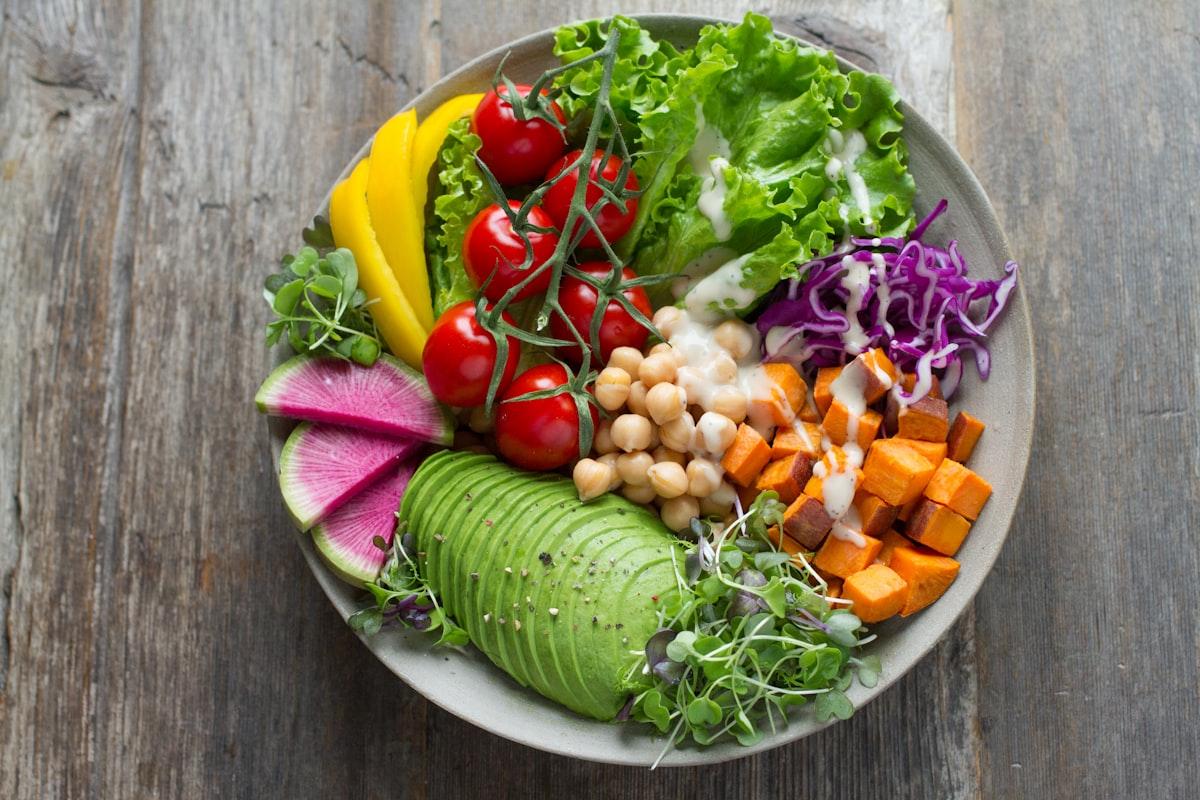
Meal Prep for Beginners: 7 Simple Strategies to Save Time and Eat Healthier All Week
Master meal prep with these 7 beginner-friendly strategies. Save hours each week, eat healthier, and stop stressing about what's for dinner.
Verdu Team
The team behind Verdu, your AI-powered nutrition companion
It's 6:30 PM on a Wednesday. You're exhausted from work, starving, and staring blankly into your fridge. A few wilted vegetables, some questionable leftovers, and half a block of cheese stare back. The takeout menu on the counter whispers your name.
Sound familiar?
You're not alone. Most people want to eat healthier and save money by cooking at home—but the daily grind of deciding what to cook, shopping for ingredients, and actually preparing meals feels overwhelming. By the time you get home, the last thing you want to do is spend an hour in the kitchen.
This is exactly why meal prep has become so popular. And here's the good news: you don't need to spend your entire Sunday cooking elaborate meals or become a meal-prep influencer with perfectly portioned containers. Real meal prep for real people is simpler than you think.
In this guide, we'll walk through 7 beginner-friendly strategies that actually work—backed by nutrition experts, tested by busy families, and designed to save you time, money, and stress all week long.
What Is Meal Prep, Really?
Let's clear up a common misconception: meal prep doesn't mean cooking all your meals for the entire week on Sunday and eating the same thing for seven days straight.
Meal prep is simply preparing components of your meals ahead of time so that cooking during the week is faster and easier. It might mean:
- Batch-cooking proteins like chicken or beans
- Chopping vegetables in advance
- Cooking a big pot of rice or quinoa
- Pre-portioning snacks
- Planning your meals for the week and shopping accordingly
The goal? Reduce decision fatigue, save time during busy weeknights, and make healthy eating the easier choice.
According to the American Heart Association, meal planning helps you save time and money by mapping out a week's worth of healthy, delicious meals for your family. Nothing eats up time like an extra trip to the grocery store or staring at your pantry trying to figure out what to cook.
Why Meal Prep Works (Even for Beginners)
Before we dive into the strategies, let's talk about why meal prep is worth your time:
1. You'll Save Hours Each Week
The American Heart Association notes that making twice as much doesn't usually take twice the time. Cooking double batches means you can create multiple meals from one cooking session, dramatically reducing your time in the kitchen throughout the week.
2. You'll Eat Healthier
When healthy meals are already prepped and ready to go, you're far less likely to reach for processed convenience foods or expensive takeout. Pre-prepped meals mean you control the ingredients, portions, and nutrition.
3. You'll Save Money
By planning your meals and shopping with a list, you avoid impulse purchases and reduce food waste. Plus, home-cooked meals cost a fraction of restaurant or delivery meals.
4. You'll Reduce Stress
No more "what's for dinner?" panic. When you have a plan and prepped ingredients, mealtimes become predictable and manageable—even on your busiest days.
7 Simple Meal Prep Strategies for Beginners
Ready to get started? Here are seven practical, beginner-friendly strategies you can implement this week.
1. Start Small (Don't Overwhelm Yourself)
The biggest mistake beginners make? Trying to prep an entire week's worth of meals right away.
Mayo Clinic Diet experts recommend starting small by aiming to create enough dinners for just 2-3 days of the week. Break the process down into manageable steps, and dedicate even just a couple of hours each week to shop, prep, and portion meals.
Why this works: Starting small builds confidence and momentum. Once you've successfully prepped a few meals, you'll naturally want to expand. Trying to do too much too soon leads to burnout and giving up.
Action step: This week, choose just 2-3 dinners to prep. That's it. Don't worry about breakfast, lunch, or snacks yet—just focus on making a few weeknight dinners easier.
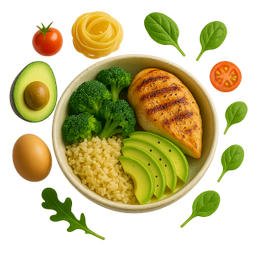
Smart Meal Suggestions
Not sure what meals to prep? Verdu's AI-powered meal planning suggests balanced, delicious recipes based on your nutritional goals, dietary preferences, and what ingredients you already have on hand. No more scrolling through recipe sites for hours—just personalized meal ideas in seconds.
2. Pick One Consistent Prep Day
Consistency is key to making meal prep a sustainable habit.
The Harvard School of Public Health Nutrition Source recommends choosing a specific day of the week to plan the menu, write out your grocery list, food shop, and do meal prep. For most people, this is Sunday, but it could be any day that works with your schedule.
Why this works: When meal prep becomes a regular part of your weekly routine—like laundry or grocery shopping—it stops feeling like an extra task and becomes automatic.
Action step: Look at your calendar and pick one day this week where you have 2-3 hours available. Block that time off and protect it like you would any important appointment.
Pro tip: You don't have to do everything in one session. Some people prefer to shop on Saturday and prep on Sunday. Others shop mid-week and prep in two shorter sessions. Find what works for your schedule.
3. Batch Cook Your Staples
This is the game-changer that saves the most time.
The Harvard Nutrition Source meal prep guide emphasizes focusing first on foods that take the longest to cook: proteins like chicken and fish; whole grains like brown rice, quinoa, and farro; dried beans and legumes; and roasted vegetables.
Why this works: These staple ingredients are the building blocks of most healthy meals. When they're already cooked, you can throw together a nutritious dinner in 10-15 minutes instead of an hour.
Examples of what to batch cook:
- Proteins: Grilled chicken breasts, baked salmon, hard-boiled eggs, cooked ground turkey, roasted chickpeas
- Grains: Brown rice, quinoa, farro, whole wheat pasta
- Vegetables: Roasted broccoli, bell peppers, sweet potatoes, cauliflower, zucchini
- Legumes: Black beans, lentils, pinto beans
Action step: This week, choose one protein, one grain, and one or two vegetables to batch cook. Cook large quantities and store them in airtight containers.
4. Prepare Versatile Building Blocks
Instead of prepping complete, assembled meals (which can get boring), the Harvard Nutrition Source recommends preparing staple foods that everyone in the family enjoys, such as washed greens for salad, hard-boiled eggs, a bowl of chopped fruit, and cooked beans.
Why this works: Versatile components can be mixed and matched throughout the week to create different meals, preventing "meal prep fatigue." You're not eating the same thing every day—you're just using the same prepped ingredients in different combinations.
Examples of versatile building blocks:
- Washed and chopped lettuce and vegetables for salads
- Hard-boiled eggs (snacks, salads, breakfast)
- Chopped fresh fruit (breakfast, snacks, smoothies)
- Cooked beans or lentils (tacos, salads, soups, bowls)
- Shredded rotisserie chicken (tacos, salads, sandwiches, pasta)
- Cooked quinoa or brown rice (bowls, sides, fried rice)
Action step: Wash and chop vegetables when you get home from the grocery store. Store washed greens in containers lined with paper towels to keep them fresh longer.
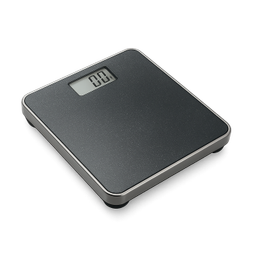
Track Your Macros Effortlessly
When batch cooking proteins, grains, and vegetables, it's helpful to know how these ingredients fit into your daily nutrition goals. Verdu's meal scanning and macro tracking lets you quickly log prepped ingredients and meals to ensure you're hitting your protein, carb, and fat targets—without manual calculations or food scales.
Snap a photo, see your macros, and know you're on track. It's that simple.
5. Prioritize Cooking Order (Work Smarter, Not Harder)
If you're cooking multiple things at once during your prep session, work efficiently by prioritizing cooking order.
The Harvard Nutrition Source suggests starting with foods that take the longest to cook first—like roasting vegetables, cooking whole grains, or baking proteins in the oven.
Why this works: While your oven is roasting vegetables and chicken for 30-40 minutes, you can use that time to chop other ingredients, cook rice on the stovetop, or portion snacks. Multitasking means you finish faster.
Efficient meal prep order:
- Start with oven-roasted items (proteins, vegetables) at high heat (400-425°F)
- Put grains on the stove while the oven works (rice, quinoa, pasta)
- While those cook, chop raw vegetables for salads or snacks
- Boil eggs or prepare other quick items
- Let everything cool, then portion into containers
Action step: Write down your meal prep plan before you start cooking. List what needs to be cooked and in what order. This simple step saves mental energy and time.
6. Master Safe Storage Practices
Food safety is crucial when meal prepping. You're cooking food in advance, so proper storage ensures it stays fresh and safe to eat.
According to the USDA Food Safety and Inspection Service, perishable food should always be refrigerated within 2 hours (1 hour when the temperature is above 90°F). The refrigerator should be at 40°F or below and the freezer at 0°F or below.
Key food safety guidelines for meal prep:
- Cool food quickly: Divide large amounts of leftovers into shallow containers for quicker cooling
- Label everything: Use masking tape or labels to write the date you prepared each item
- Use within 3-4 days: Most cooked leftovers should be used within 3 to 4 days
- Reheat to 165°F: When reheating leftovers, they should reach an internal temperature of 165°F
- Store properly: Use airtight containers to prevent cross-contamination and maintain freshness
Container tips: Invest in a set of glass or BPA-free plastic containers in various sizes. Clear containers let you see what's inside, making you more likely to use the food.
Action step: Buy a roll of masking tape and a permanent marker. Label every container with the contents and date prepared. This simple habit prevents food waste and keeps you safe.
7. Stay Flexible (Life Happens)
Here's a secret the meal-prep influencers won't tell you: you don't have to stick to your plan perfectly.
The American Heart Association emphasizes staying flexible—it's okay to swap meals or repeat favorites. Life is unpredictable, and rigid meal plans often lead to frustration and wasted food.
Why this works: Flexibility reduces pressure and prevents burnout. If you get invited to dinner with friends or aren't in the mood for the meal you planned, that's fine. Swap it for another night or freeze prepped ingredients for later.
Flexibility strategies:
- Plan only 5 meals instead of 7: Leave room for leftovers, dining out, or unexpected changes
- Freeze extra portions: If you batch cook more than you'll eat in 3-4 days, freeze portions immediately for future weeks
- Repeat meals you love: If you find a meal that's easy, delicious, and nutritious, it's okay to make it every week
- Use theme nights: "Meatless Monday," "Taco Tuesday," "Pasta Thursday"—themes simplify decisions without feeling restrictive
Action step: This week, plan only 5 dinners instead of 7. Give yourself permission to have 2 "flexible" nights for leftovers, takeout, or spontaneous plans.
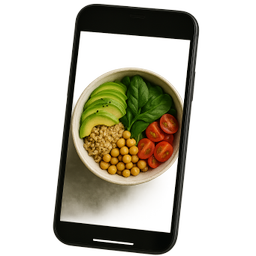
Track Your Prepped Meals
One challenge with meal prep is remembering what you've made and when you need to use it. Verdu's meal logging feature makes it easy to track your prepped meals throughout the week. Snap a photo of your meal, log it instantly, and see your nutrition breakdown—all while keeping a record of what you've prepared.
No more forgotten containers in the back of the fridge. Stay organized, reduce waste, and hit your nutrition goals effortlessly.
Your 3-Step Action Plan to Start Meal Prepping This Week
Feeling ready to try meal prep? Here's how to start today:
Step 1: Choose 2-3 Simple Meals (10 minutes)
Pick 2-3 dinners you want to eat this week. Keep it simple—no complicated recipes. Think about meals that share ingredients to save money and reduce waste.
Example meal plan for beginners:
- Meal 1: Grilled chicken with roasted vegetables and quinoa
- Meal 2: Chicken tacos with black beans and salsa
- Meal 3: Quinoa bowl with black beans, roasted vegetables, and avocado
Notice how these meals use the same base ingredients (chicken, quinoa, black beans, vegetables) but create different dishes. This is smart meal planning.
Step 2: Make Your Shopping List and Shop (30-45 minutes)
Based on your chosen meals, write down exactly what you need to buy. Check your pantry first to avoid buying duplicates.
The American Heart Association recommends staying on budget at the grocery store by building your shopping list from your plan. This prevents impulse purchases and reduces food waste.
Pro tip: Organize your list by store section (produce, meat, pantry, dairy) to save time while shopping.
Step 3: Set Aside 2 Hours to Prep (Sunday or your chosen day)
Block off 2 hours on your calendar for meal prep. Put on some music or a podcast, and get to work:
- Start with the longest-cooking items (proteins in the oven, grains on the stove)
- While those cook, chop vegetables and prep other ingredients
- Let everything cool completely before storing
- Portion into containers and label with the date
- Store in the fridge (use within 3-4 days) or freezer (use within 2-3 months)
Reminder: You don't have to assemble complete meals. Just prep the components (cooked chicken, cooked quinoa, chopped vegetables, etc.) and quickly assemble them when you're ready to eat.
The Bottom Line: Meal Prep Doesn't Have to Be Perfect
Here's the truth: meal prep isn't about perfection—it's about progress.
You don't need to prep every single meal for the week. You don't need fancy containers or a Pinterest-worthy fridge. You don't need to spend hours in the kitchen every Sunday.
What you need is a simple, sustainable system that works for your life.
Start with just 2-3 meals. Pick one consistent day to prep. Batch cook your staples. Use versatile ingredients. Prioritize cooking order. Store food safely. And stay flexible when life gets in the way.
These seven strategies aren't just theory—they're backed by nutrition experts from Harvard, Mayo Clinic, the American Heart Association, and the USDA. They work for busy professionals, parents, students, and anyone who wants to eat healthier without spending hours in the kitchen every night.
Even small changes add up. If meal prep saves you just 30 minutes per weeknight, that's 2.5 hours per week you get back to spend with family, exercise, relax, or do anything else you love. Over a year, that's 130 hours—more than five full days.
Plus, you'll save money, reduce food waste, and actually enjoy your meals instead of stressing about what to cook.
Ready to Make Meal Prep Even Easier?
If planning meals, tracking nutrition, and staying organized still feels overwhelming, that's where technology can help.
Verdu's AI-powered nutrition app takes the guesswork out of meal planning and tracking. Get personalized meal suggestions based on your goals, snap photos to log your meals instantly, track your macros without manual calculations, and build sustainable healthy eating habits—all from your phone.
Meal prep is easier when you have a smart assistant helping you plan, track, and stay on target.
Start eating healthier, saving time, and reducing stress today:
Download Verdu and transform meal prep from a chore into a simple, sustainable habit that fits your busy life.
Looking for more healthy eating tips? Check out our guides on Understanding Macronutrients, High-Protein Foods for Active Lifestyles, and Stop Wasting Food with AI Meal Planning.
Related Articles
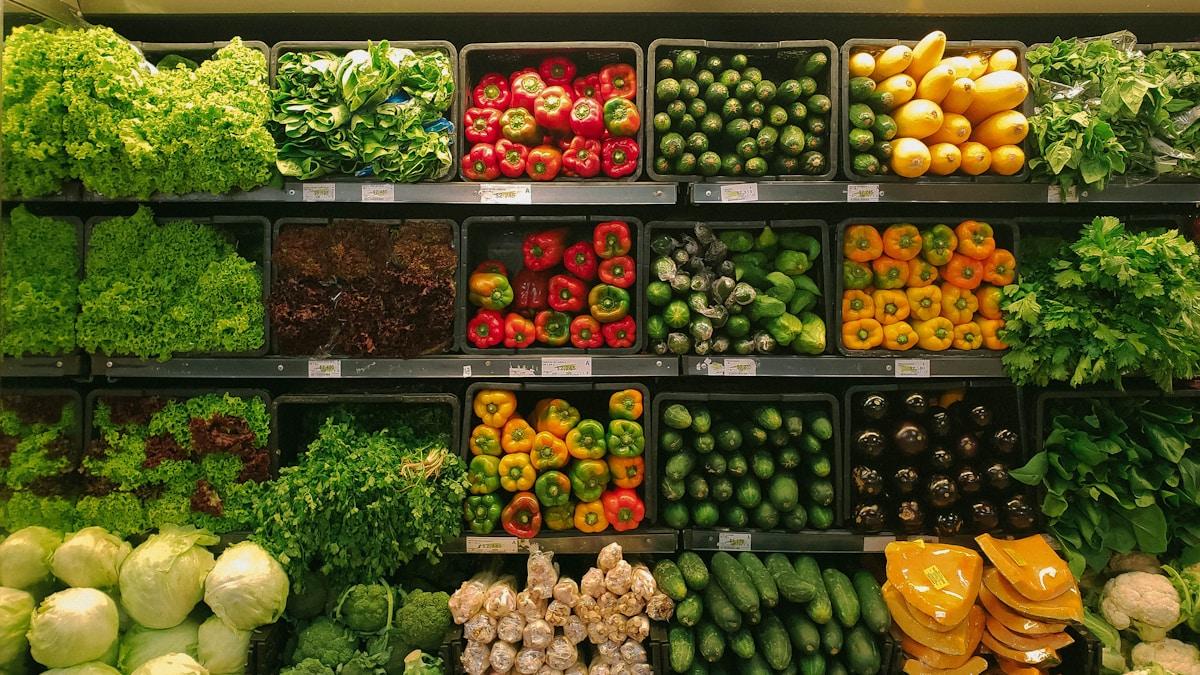
Budget-Friendly Healthy Eating: 10 Ways to Eat Nutritious Meals on $50 a Week
Discover 10 proven strategies to eat healthy on a tight budget. Learn how to enjoy nutritious meals for $50 per week with smart shopping, meal planning, and budget-friendly food choices.

Stop Wasting Food: How AI-Powered Meal Planning Transforms Your Pantry Into Delicious Meals
Discover how AI meal planning helps you reduce food waste, save money, and create delicious meals from ingredients you already have. Learn practical strategies to transform your pantry into a source of inspiration.
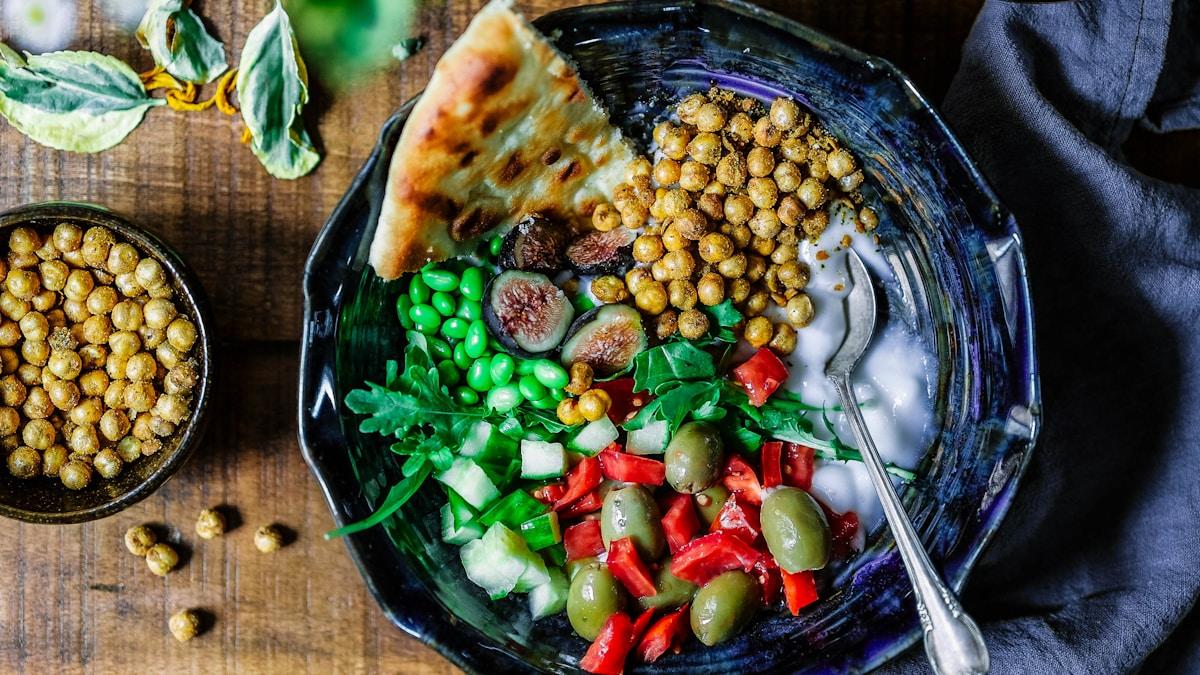
Boost Your Energy Naturally: Science-Backed Nutrition Strategies to Fight Fatigue
Discover evidence-based nutrition strategies to boost energy levels naturally, fight fatigue, and maintain metabolism throughout the day—no caffeine crash required.